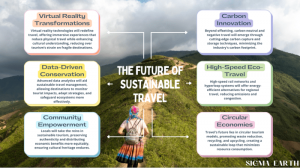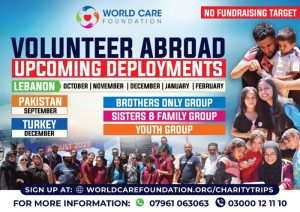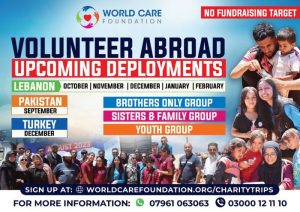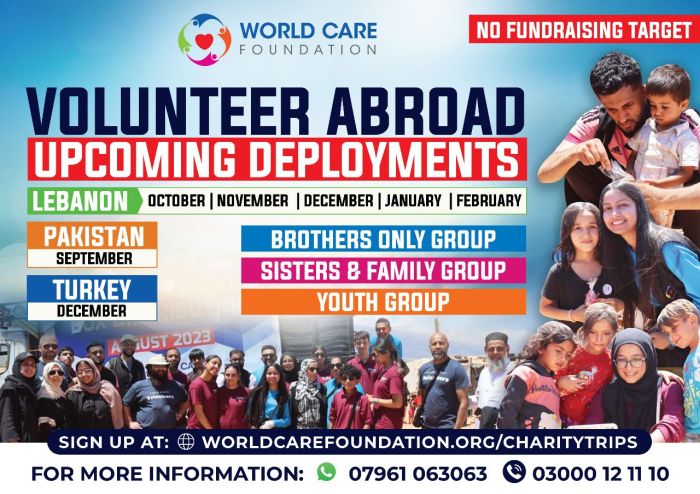
Charity travel initiatives offer a unique opportunity to combine travel with meaningful contributions to communities in need. This exploration delves into the various facets of these initiatives, from understanding their diverse forms and the motivations behind them to mastering the logistical aspects and ensuring sustainable practices. We’ll examine the positive impacts on both the communities served and the volunteers themselves, highlighting the transformative power of responsible global engagement.
We will cover the planning process, including budgeting, essential documents, and choosing appropriate transportation and accommodation. Crucially, we’ll emphasize the importance of cultural sensitivity, environmental responsibility, and collaboration with reputable organizations to maximize positive impact and minimize any negative consequences. This guide aims to equip aspiring volunteers with the knowledge and resources needed to embark on a rewarding and impactful journey.
Defining Charity Travel Initiatives

Charity travel initiatives, also known as volunteer tourism or voluntourism, involve individuals traveling to a different location to participate in charitable work. These initiatives combine the experience of travel with the fulfillment of contributing to a worthy cause, offering a unique and impactful way to give back to communities in need. They vary widely in their focus and implementation, offering opportunities for individuals of diverse backgrounds and skill sets.Charity travel initiatives are driven by a multitude of motivations.
For participants, the desire to make a tangible difference in the lives of others is often paramount. Many are seeking a more meaningful travel experience than simply sightseeing, yearning to connect with a different culture and contribute to positive change. The opportunity for personal growth and skill development, often in challenging environments, also plays a significant role.
Finally, some participants are motivated by a sense of adventure and the chance to explore new places while contributing to a social cause.
Types of Charity Travel Initiatives
Charity travel encompasses a wide range of activities. Some initiatives focus on environmental conservation, such as reforestation projects or wildlife protection efforts. Others concentrate on community development, including building schools, providing healthcare services, or teaching English as a second language. Still others support humanitarian aid efforts, such as disaster relief or providing assistance to refugees. The specific activities undertaken depend heavily on the organization facilitating the initiative and the needs of the local community.
Organizations Facilitating Charity Travel
Numerous organizations facilitate charity travel initiatives. These range from large, established non-governmental organizations (NGOs) like Habitat for Humanity International and the Peace Corps to smaller, specialized organizations focused on particular regions or causes. Many organizations offer structured programs with pre-arranged accommodation, activities, and support, while others provide a more independent framework, allowing volunteers more autonomy in their work.
Some organizations focus on specific skills, such as medical professionals volunteering their expertise in underserved areas. Examples include Doctors Without Borders and Global Health Corps. It is crucial to research and carefully select an organization aligned with one’s values and capabilities.
Volunteer Roles in Charity Travel Initiatives
Volunteers in charity travel can play diverse roles depending on their skills and the needs of the project. Some might be involved in manual labor, such as construction or agricultural work. Others may provide educational support, teaching children or adults. Many initiatives require individuals with specialized skills, such as medical professionals, engineers, or teachers. Volunteers may also play administrative or logistical roles, supporting the smooth operation of the project.
The specific responsibilities will be Artikeld by the chosen organization before the volunteer’s participation.
Impact and Benefits of Charity Travel
Charity travel, when thoughtfully planned and executed, offers a powerful mechanism for positive change, impacting both the communities visited and the volunteers themselves. It fosters a unique synergy where the needs of vulnerable populations are met while simultaneously enriching the lives of those offering assistance. This mutually beneficial relationship is the cornerstone of successful charity travel initiatives.
Positive Impacts on Local Communities
The positive effects of well-organized charity travel extend far beyond immediate aid. Projects often focus on sustainable development, ensuring long-term benefits. For instance, a volunteer group building a well in a rural village not only provides immediate access to clean water but also improves sanitation, reduces waterborne diseases, and potentially frees up time for community members to focus on education or economic activities.
Similarly, initiatives focused on education can provide crucial skills training, improving literacy rates and empowering individuals to contribute more effectively to their communities. Such projects often create employment opportunities during the construction or implementation phase, injecting much-needed capital into the local economy. The long-term impact can be substantial, leading to improved health, education, and economic self-sufficiency.
Personal Growth and Development of Volunteers
Participating in charity travel offers volunteers a transformative experience. Beyond the immediate act of service, volunteers often gain valuable skills, such as project management, teamwork, and cross-cultural communication. Exposure to different cultures and perspectives broadens their worldview, fostering empathy and understanding. The challenges encountered during the trip, from logistical hurdles to cultural adjustments, build resilience and adaptability. Many volunteers report increased self-confidence and a heightened sense of purpose after participating in such initiatives.
The experience of directly contributing to positive change can be profoundly rewarding, fostering a greater appreciation for global interconnectedness and social responsibility.
Effectiveness of Different Charity Travel Models
The effectiveness of charity travel models varies considerably depending on several factors, including the project’s design, the level of community involvement, and the long-term sustainability plan. Some models focus on short-term, high-impact projects, like medical clinics or disaster relief efforts. Others prioritize long-term development projects, such as building schools or establishing sustainable farming practices. A highly effective model often involves significant collaboration with local organizations, ensuring that projects align with community needs and are locally led and sustained.
Models that incorporate education and capacity-building components for local communities are generally more sustainable than those that rely solely on external input. Careful consideration of the local context and the long-term implications is crucial for maximizing impact.
Potential Challenges and Limitations of Charity Travel Initiatives
Despite the potential benefits, charity travel initiatives face several challenges. One key concern is the potential for “voluntourism,” where well-intentioned volunteers inadvertently cause more harm than good due to a lack of understanding of local needs and contexts. Inadequate planning, insufficient training, and a lack of collaboration with local organizations can undermine the effectiveness of projects and even create dependency.
Financial sustainability is another critical factor. Many projects rely on short-term funding cycles, making long-term planning and impact assessment difficult. Furthermore, ethical considerations surrounding the exploitation of local labor and the potential for cultural insensitivity require careful attention. Addressing these challenges requires thorough planning, ongoing evaluation, and a commitment to ethical and sustainable practices.
Planning and Logistics of Charity Travel
Embarking on a charity travel initiative requires meticulous planning and logistical coordination to ensure a successful and impactful experience. This section Artikels a step-by-step guide, essential considerations, and practical tips to help you navigate the process effectively. Careful preparation minimizes unforeseen challenges and maximizes the positive contribution of your trip.
A Step-by-Step Guide for Charity Travel Participation
Participating in a charity travel initiative involves a series of steps that, when followed methodically, ensure a smooth and productive experience. This guide provides a structured approach to planning and executing your trip.
- Research and Selection: Thoroughly research different organizations and their projects. Consider your skills, interests, and the impact you wish to make. Choose an organization with a strong track record and transparent operations.
- Application and Acceptance: Carefully review the application requirements and submit a complete application. Be prepared for an interview process to assess your suitability for the project.
- Pre-Departure Briefing: Attend any pre-departure briefings or online sessions provided by the organization. These sessions provide crucial information about the project, location, cultural norms, and safety guidelines.
- Travel Arrangements: Book flights and accommodation well in advance, considering factors like cost-effectiveness and sustainability. Confirm visa requirements and necessary travel insurance.
- On-Site Participation: Actively participate in the project activities, respecting local customs and guidelines. Maintain open communication with the organization’s on-site representatives.
- Post-Trip Reporting: Share your experiences and insights with the organization through reports or presentations. Consider how you can continue to support the organization’s work after your return.
Essential Considerations Before Embarking on a Charity Trip
Several crucial factors demand careful consideration before committing to a charity travel initiative. Overlooking these points could compromise the effectiveness of your contribution and potentially lead to difficulties during the trip.
- Project Alignment: Ensure the project aligns with your skills, interests, and available time commitment. A mismatch can lead to frustration and reduced effectiveness.
- Health and Safety: Research the health risks associated with the destination and obtain necessary vaccinations and medications. Understand local safety protocols and emergency procedures.
- Cultural Sensitivity: Familiarize yourself with the local culture, customs, and traditions. Respectful behavior is essential for a positive and productive experience.
- Environmental Impact: Consider the environmental footprint of your trip. Opt for sustainable travel options whenever possible and practice responsible tourism.
- Communication: Ensure you have reliable communication methods while abroad. Inform someone of your itinerary and check-in regularly.
Necessary Documents and Preparations
Adequate preparation is vital for a smooth and efficient charity travel experience. This checklist highlights the essential documents and preparations required.
- Passport and Visas: Ensure your passport is valid for at least six months beyond your travel dates and obtain any necessary visas well in advance.
- Travel Insurance: Secure comprehensive travel insurance that covers medical emergencies, trip cancellations, and lost belongings.
- Vaccinations and Medications: Consult your doctor about recommended vaccinations and necessary medications for your destination.
- Copies of Documents: Make multiple copies of your passport, visa, travel insurance policy, and other important documents. Store them separately from the originals.
- Emergency Contacts: Keep a list of emergency contacts, including the organization’s representatives, local embassy, and family members.
Managing Travel Costs and Budgeting Effectively
Careful budgeting is crucial for responsible charity travel. This section offers tips for managing travel expenses and maximizing your impact.
Creating a detailed budget is paramount. This involves estimating all potential costs, from flights and accommodation to visas and spending money. Explore cost-effective options like budget airlines, hostels, and local transportation. Consider fundraising to offset the costs of your trip and increase your overall contribution to the charity. Many organizations offer guidance on fundraising strategies.
Examples of budget categories include: flights, accommodation, visas, vaccinations, ground transportation, food, activities, and personal spending money. Tracking expenses throughout the trip is also advisable, allowing for adjustments and ensuring you stay within your budget. For instance, a traveler might allocate 50% of their budget to flights, 20% to accommodation, 15% to food, and 15% to miscellaneous expenses.
These percentages are merely examples and will vary significantly based on the destination and duration of the trip.
Sustainable and Responsible Charity Travel
Charity travel, while driven by noble intentions, carries an environmental and social footprint. Minimizing this impact is crucial to ensuring the long-term sustainability of both the projects supported and the communities involved. Responsible charity travel prioritizes ethical considerations alongside the charitable goals, fostering positive relationships and leaving a minimal negative trace.Sustainable and responsible charity travel requires a multifaceted approach, encompassing environmental protection, cultural sensitivity, and collaboration with ethical organizations.
Ignoring these factors risks undermining the very purpose of the charitable work.
Minimizing Environmental Impact
Strategies for reducing the environmental footprint of charity travel include prioritizing carbon-neutral travel options whenever possible. This could involve choosing airlines with robust carbon offsetting programs, opting for trains or buses where feasible, and utilizing efficient transportation within the destination country. Careful consideration of accommodation choices – selecting eco-friendly hotels or homestays that prioritize sustainable practices – is also vital.
Furthermore, minimizing waste through responsible consumption and recycling, and supporting local businesses that adhere to sustainable practices, further contributes to a reduced environmental impact. For example, a volunteer group traveling to a rainforest for a conservation project might choose to offset their flights and utilize local guides who promote sustainable ecotourism.
Ensuring Cultural Sensitivity and Respect
Cultural sensitivity and respect are paramount. Before embarking on any charity travel initiative, thorough research into the local customs, traditions, and etiquette of the host community is essential. This includes understanding local dress codes, communication styles, and social norms. Respecting local customs, engaging with communities in a respectful manner, and avoiding actions that might be considered offensive or disruptive demonstrates genuine care and avoids unintended negative consequences.
For instance, volunteers working in a rural community might take the time to learn basic phrases in the local language and dress modestly, demonstrating respect for local customs. It is also important to engage with local communities as collaborators, not as saviors, to ensure sustainability and ownership.
Working with Reputable Organizations
Partnering with established and reputable organizations is crucial. Such organizations typically have robust ethical guidelines, transparent operations, and a demonstrated commitment to sustainability and community engagement. Researching an organization’s track record, reviewing their mission statement, and seeking testimonials from past volunteers can help assess their credibility and commitment to responsible practices. Selecting organizations that prioritize local empowerment and community participation ensures the long-term positive impact of the charity travel initiative.
For example, choosing an organization with a strong local presence, that employs local staff, and actively engages with community leaders, ensures that the project is designed with the needs of the local population in mind and not imposed upon them.
Best Practices for Sustainable Tourism
Best practices for sustainable tourism in the context of charity travel include a strong emphasis on minimizing waste, conserving water and energy, and supporting local businesses and communities. This might involve choosing accommodation with sustainable practices, such as using renewable energy and reducing water consumption. Prioritizing local guides and businesses not only supports the local economy but also provides opportunities for authentic cultural exchange.
Respecting wildlife and natural habitats is also crucial, ensuring that activities do not disrupt ecosystems or endanger species. Finally, promoting responsible travel amongst volunteers, through education and awareness campaigns, is vital for ensuring long-term sustainability. For instance, a group visiting a coastal community for a beach cleanup project might choose to use reusable water bottles, avoid single-use plastics, and support local restaurants that source their ingredients sustainably.
Travel Resources and Opportunities
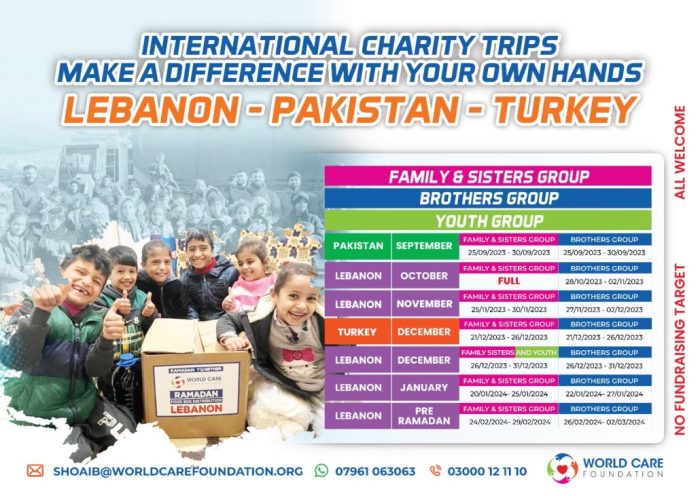
Embarking on a charity travel experience requires careful planning and research. Understanding the available resources and opportunities is crucial for a successful and impactful trip. This section will provide a categorized list of organizations offering such opportunities, along with resources for finding affordable travel options and budget-friendly accommodation.Finding the right organization and securing affordable travel arrangements are key components of a successful charity travel initiative.
This section aims to equip you with the tools and information needed to navigate these aspects effectively.
Organizations Offering Charity Travel Opportunities
A variety of organizations offer opportunities to participate in impactful volunteer travel experiences. The following table provides a sample, and further research is encouraged to find projects aligning with your skills and interests. Note that the information provided here is for illustrative purposes and may not be entirely up-to-date; always verify details directly with the organization.
| Organization Name | Location (Focus) | Project Type | Contact Information |
|---|---|---|---|
| Global Volunteers | Worldwide | Community Development, Education, Healthcare | Website: globalvolunteers.org |
| Cross-Cultural Solutions | Various Developing Countries | Community Development, Environmental Conservation, Education | Website: crossculturalsolutions.org |
| Projects Abroad | Worldwide | Various Projects (Teaching, Medicine, Conservation) | Website: projects-abroad.com |
| United Planet | Various Developing Countries | Community Development, Environmental Projects, Teaching | Website: unitedplanet.org |
Finding Affordable Travel Options
Securing affordable flights is paramount for budget-conscious charity travelers. Several strategies can significantly reduce travel costs. Utilizing flight comparison websites like Google Flights, Skyscanner, and Kayak allows you to compare prices from multiple airlines and identify the best deals. Consider flexible travel dates, as prices often fluctuate depending on the day of the week and time of year.
Exploring budget airlines and utilizing airline loyalty programs can also yield significant savings. Furthermore, booking flights well in advance or during off-peak seasons can lead to substantial price reductions. Finally, being open to flying into alternative airports near your destination might uncover cheaper options.
Finding Budget Accommodation
Securing affordable and safe accommodation is another critical aspect of planning a charity trip. Several online platforms offer budget-friendly options. Hostelworld and Booking.com often feature hostels and guesthouses at significantly lower prices than hotels. Airbnb provides a platform for renting rooms or entire apartments from local hosts, which can offer a more immersive cultural experience. Consider staying in homestays, which can be a cost-effective and culturally enriching alternative to hotels.
Websites specializing in budget travel, such as TripAdvisor and Lonely Planet, also offer resources and reviews for budget-friendly accommodation options. Remember to always check reviews and ensure the safety and security of your chosen accommodation.
Specific Travel Modes and Accommodations for Charity Travel
Choosing the right transportation and lodging significantly impacts the efficiency and sustainability of your charity travel initiative. Factors like budget, environmental impact, project location, and the number of volunteers need careful consideration. This section explores various options, highlighting their advantages and disadvantages to help you make informed decisions.
Travel Modes for Charity Travel
Selecting appropriate transportation depends heavily on the project’s location, scale, and the team’s size. Each mode offers unique benefits and drawbacks concerning cost, time, and environmental impact.
Flights: Air travel offers speed and accessibility, especially for reaching remote locations. However, it’s often the most expensive and environmentally damaging option. Consider carbon offsetting programs to mitigate the environmental impact. Group bookings might offer discounted fares.
Trains: Train travel provides a more sustainable and often more comfortable alternative to flying, particularly for shorter to medium distances. It’s generally cheaper than flights and allows for scenic views and productive work time. However, train journeys can be longer than flights.
Cruises: Cruises can be efficient for projects involving multiple island locations or coastal communities. They offer accommodation and transportation in one package. However, cruises are typically expensive and may not be suitable for all project types or locations. The environmental impact of large cruise ships is also a significant consideration.
Road Trips (Cars/Vans): Road trips offer flexibility and control, allowing for spontaneous stops and interaction with local communities. They are cost-effective for smaller teams and shorter distances, but can be time-consuming and tiring, especially for long journeys. Fuel costs and vehicle maintenance should be factored into the budget.
RVs (Recreational Vehicles): RVs combine transportation and accommodation, providing a mobile base for longer-term projects. This option offers flexibility and cost savings on accommodation, but fuel consumption and maintenance costs can be high. RVs are best suited for projects where mobility is crucial.
Budget-Friendly Accommodations for Charity Travel
Finding affordable lodging is crucial for maximizing the impact of your charity budget. A range of options exists beyond traditional hotels, each with its own set of pros and cons.
Vacation rentals and Airbnbs often provide more space and amenities than hotels at a lower cost, particularly for groups. They can also offer a more authentic local experience. However, availability may vary, and certain amenities might need to be confirmed in advance.
Unique stays like treehouses or houseboats offer memorable experiences and can be cost-effective alternatives, depending on location and availability. They are ideal for creating a positive impact on local communities, fostering a deeper connection to the environment and enhancing the overall volunteer experience. However, these options might be limited in number and suitability for all project types.
Comparative Table of Accommodation Options
| Accommodation Type | Cost (Approximate Range) | Suitability for Charity Travel | Pros | Cons |
|---|---|---|---|---|
| Hotel | $50-$300+/night | Suitable for most projects | Convenient, reliable amenities | Can be expensive, less personal |
| Airbnb/Vacation Rental | $30-$200+/night | Excellent for groups, long stays | Cost-effective, more space, local experience | Availability varies, potential for hidden costs |
| Hostel | $15-$40/night | Suitable for budget-conscious groups | Budget-friendly, social atmosphere | Shared facilities, limited privacy |
| Unique Stays (Treehouse, Houseboat) | Variable, often higher than hotels | Suitable for specific projects, enhances volunteer experience | Memorable, unique experience, potential for community engagement | Limited availability, potentially higher cost |
Advantages and Disadvantages of Different Transport Methods
The choice of transportation method significantly impacts the overall cost, time, and environmental footprint of your charity initiative. A careful evaluation is crucial.
Cost: Flights are typically the most expensive, followed by cruises. Trains and road trips offer more budget-friendly options, particularly for groups. RVs can be cost-effective for accommodation but incur significant fuel and maintenance expenses.
Time: Flights are the fastest, while road trips and train journeys can be significantly longer, depending on the distance. Cruises involve travel time within the journey itself.
Environmental Impact: Air travel has the highest carbon footprint, followed by cruises and road trips (depending on vehicle type and occupancy). Trains are generally the most environmentally friendly option.
Storytelling and Impact Reporting
Effectively communicating the impact of charity travel initiatives is crucial for securing future funding, attracting volunteers, and inspiring further action. This involves crafting compelling narratives that resonate with audiences and using data to demonstrate tangible results. A well-structured approach to storytelling and impact reporting ensures transparency and accountability, fostering trust and maximizing the initiative’s overall effectiveness.Storytelling is a powerful tool for conveying the human element of charity travel.
By sharing personal experiences and observations, we can connect with potential donors and volunteers on an emotional level, making the impact of the work more relatable and impactful. Data, on the other hand, provides the necessary evidence to substantiate the claims and demonstrate the initiative’s success in achieving its goals.
Compelling Stories from Past Initiatives
One successful charity travel initiative focused on building schools in rural Nepal. A volunteer’s account detailed the challenges faced – navigating difficult terrain, coordinating with local communities, and overcoming material shortages – but also highlighted the joy and fulfillment of seeing the completed school open its doors to eager children. Another initiative involving environmental conservation in the Amazon rainforest featured a volunteer’s blog detailing the biodiversity discovered, the challenges of protecting the fragile ecosystem, and the collaborative efforts with local indigenous communities.
These narratives, shared through blog posts, videos, and social media, created a powerful and lasting impression on their audience.
Template for Documenting Personal Experiences, Charity travel initiatives
A standardized template for documenting personal experiences can ensure consistency and facilitate the compilation of compelling narratives. This template could include sections for: Date and location; Detailed description of activities undertaken; Observations on the local community and environment; Challenges faced and solutions implemented; Personal reflections and emotional responses; Photographs and videos (with captions).
This structured approach helps volunteers capture their experiences accurately and comprehensively, providing rich material for future storytelling.
Framework for Reporting Impact
A robust impact reporting framework should include: Clearly defined goals and objectives; Baseline data collected before the initiative begins; Data collected during and after the initiative; Quantitative indicators (e.g., number of people helped, projects completed, resources distributed); Qualitative indicators (e.g., changes in community attitudes, improvements in infrastructure, enhanced environmental protection); Challenges encountered and lessons learned; Sustainability plan for long-term impact.
This structured approach ensures that the initiative’s impact can be accurately measured and reported, demonstrating accountability and providing valuable insights for future initiatives.
Visual Representation of Impact
Visual representations of data are crucial for conveying complex information clearly and concisely. For example, a bar chart could compare the number of schools built before and after the initiative. A pie chart could illustrate the proportion of funds allocated to different aspects of the project. A map could visually represent the geographical reach of the initiative, highlighting areas impacted.
Line graphs could show trends over time, such as the increase in community participation or the improvement in environmental indicators. These visuals make the impact of the charity travel initiative readily understandable and memorable for a wider audience.
Ultimately, charity travel initiatives represent a powerful intersection of personal growth, global responsibility, and community empowerment. By carefully considering the planning stages, prioritizing sustainability, and collaborating with reputable organizations, individuals can contribute meaningfully to positive change while enriching their own lives. This guide provides a framework for engaging in these initiatives responsibly and effectively, fostering a cycle of mutual benefit and lasting impact.
Questions and Answers: Charity Travel Initiatives
What are the typical costs associated with charity travel?
Costs vary greatly depending on the destination, duration, and type of project. Factors like flights, accommodation, visas, and in-country expenses should all be considered. Some organizations offer financial assistance or fundraising support.
How do I find reputable organizations to work with?
Thoroughly research organizations before committing. Look for transparency in their financial reporting, positive reviews from past volunteers, and a clear mission statement outlining their impact. Check with independent charity evaluators for verification.
What if I have limited travel experience?
Many organizations welcome first-time volunteers. They often provide detailed guidance and support throughout the process, from pre-departure preparation to in-country assistance. Don’t let a lack of experience deter you.
What kind of skills are needed for charity travel?
The required skills depend on the specific project. Many projects benefit from basic skills like teaching English, medical assistance, construction, or even just general manual labor. However, adaptability, communication skills, and a willingness to learn are universally valuable.
